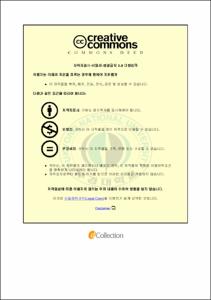Preparation of seaweed detritus for the sea cucumber Apostichopus japonicus feed
- Abstract
- Twenty-three various bacterial sources were collected from different sources in Busan, Korea to isolate seaweed degrading strains. Accordingly, the bacteria degraded brown seaweeds: Laminaria japonica and Undaria pinnatifida were identified as strain GR2, strain 52 and strain 53. Based on 16S rDNA gene amplification and sequence strain GR2 with 99% similarly was matched with Bacillus thermolactis R-6488. Also strain 52& 53 were match with Marinobacter salicampi ISL-40, and M. sp with similarly 99.66% and 96.33% respectively. The optimum conditions for the growth of GR2 were liquid medium with temperature of 52.5oC, pH of 7.5-8.0, salinity of 2%, incubation time of 48 h. Similarly growth conditions were observed for the other two bacterial strains 52 and 53, which were found effective in digesting the other brown seaweed U. pinnatifida. Also the optimum substrate concentration of the brown seaweeds was 60 gm in a 1 liter jar. Fermentation of two brown-seaweeds tissue with above optimum conditions, to degraded U. pinnatifida by strains 52, 53 and L. japonica by strain GR2 gave detritus particle size of 40 - 50µm after 72 h and 120 h respectively. The number of bacteria cell increased up to 36 h for all the bacteria strains and then dropped rapidly at 60 h with strain GR2. Similar trend was observed for strain 52, 53 after 84 h. Fermentation by strain 52, 53 increased the reducing sugar amount up to 36 h from 0.077 to 0.105 mg/mL and then dropped 0.038 mg/mL at 108 h, similarly, digestion by strain GR2 rose the reducing sugar amount from 0.08 to 0.109 mg/mL at 36 h of fermentation, decreased 0.036 mg/mL at 108 h. Viscosity increased until 36 h and it reached 3.6 c. P and 2.5 c. P by strain 52, 53 and GR2 digestion respectively. The alginate content was decreased by strains 52, 53 and strain GR2 from 0.134 to 0.034 g alginate dry wt/ tissue wet wt, and 0.137 to 0.032 g alginate dry wt/ tissue wet wt, respective. The results of the present study suggest that inoculation of brown-seaweeds with tissue degrading bacteria not only shortened the time of degradation but also protected marine environment and utilized its for animal feed purposes.
- Issued Date
- 2015
- Awarded Date
- 2015. 2
- Type
- Dissertation
- Publisher
- 부경대학교
- Affiliation
- 국제수산과학협동과정
- Department
- 글로벌수산대학원 국제수산과학협동과정
- Advisor
- 홍용기
- Table Of Contents
- Chapter I 1
1. Introduction 1
2. Materials and Methods 5
2.1. Isolation of useful microorganisms 5
2.2. Identification of bacterial isolate 10
2.3. Characteristics of degradation by the isolated bacteria 11
2.4. Fermentation using microorganism isolated 14
2.5. Analytical methods 14
2.6. Statistical analysis 16
3. Results and Discussion 18
3.1. Isolation and identification of bacteria 18
3.1.1. Laminaria japonica digestion by microorganism 18
3.1.2. Undaria pinnatifida digestion by microorganisms 23
3.2. Characterization of bacteria isolates 52, 53 and GR2 28
Chapter II 54
Abstract 54
1. Introduction 56
2. Materials and Methods 65
2.1. Material preparation 65
2.2. Sea cucumber evisceration 65
2.3. Rearing condition 66
2.4. Feed preparation and feeding procedure 69
2.5. Statistical analysis 72
3. Results and discussion 74
3.1. Screening of different seaweed for regeneration of sea cucumber gut 74
3.2. Effect of various ratio of E. cava in feed on gut regeneration of sea cucumber 78
3.3. Gut regeneration ability of sea cucumber 84
4. Conclusion 87
References 89
Acknowledgements 101
- Degree
- Master
- Appears in Collections:
- 글로벌수산대학원 > 국제수산과학협동과정
- Files in This Item:
-
-
Download
 Preparation of seaweed detritus for the sea cucumber Apostichopus japonicus feed.pdf
기타 데이터 / 5.36 MB / Adobe PDF
Preparation of seaweed detritus for the sea cucumber Apostichopus japonicus feed.pdf
기타 데이터 / 5.36 MB / Adobe PDF
-
Items in Repository are protected by copyright, with all rights reserved, unless otherwise indicated.